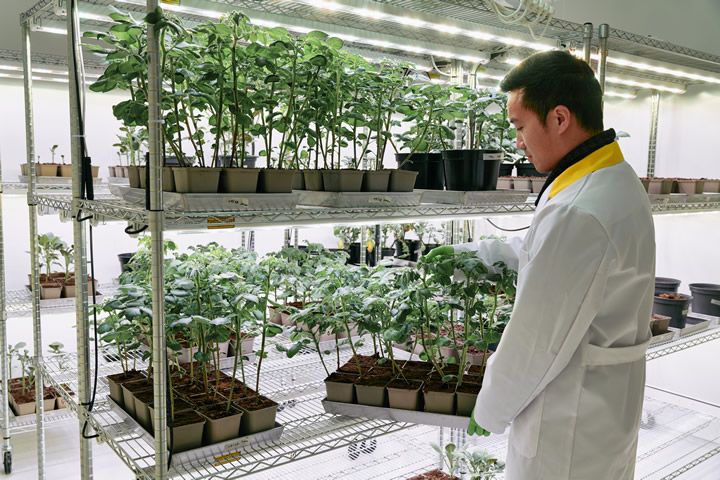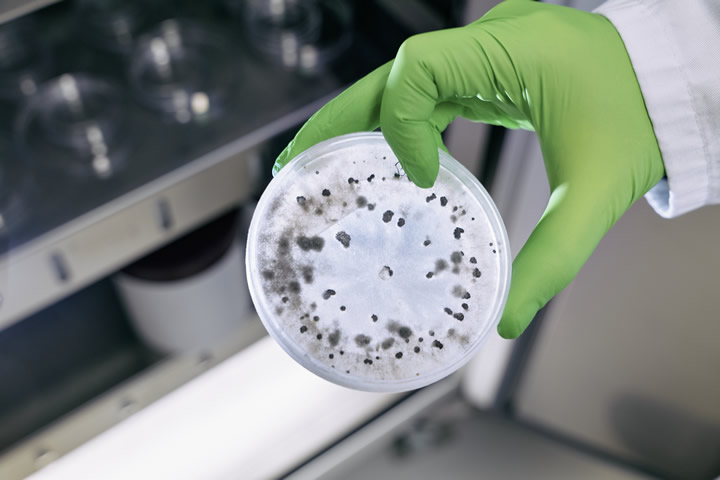Protein-based biocontrol solutions, the next wave of biofungicides, offer a new way to ensure the safety of our food supply expected to be produced at a cost-effective price point comparable to chemical-based counterparts.
 How to Fight Back Against the Concerns Caused by Fungicides
How to Fight Back Against the Concerns Caused by Fungicides

Kevin Helash, CEO | Biotalys
Each year, the Environmental Working Group publishes its “Dirty Dozen,” a list of fruits and vegetables contaminated with pesticide residues. While the list raises consumer concerns each year, it’s important to highlight that growers need tools to protect their crops. Fungal diseases, for instance, create massive havoc for our soil and our food system - often even destroying full harvests.
Fungicides play a key role in our food production that can’t be ignored, and regulatory authorities are committed to thoroughly scrutinizing new crop protection products before allowing them on the market. By transitioning to more inclusive strategies (for instance, combining the power of bio-based solutions to reduce and better time chemical applications), produce, yes even the dirty dozen!, can be grown following safe, sustainable and climate-resilient practices. Here’s how.
.jpg)
The Pivot from Pesticides & Why the Produce Industry Should Bet on Biocontrols
As the produce industry pivots to reduce its use of chemical pesticides and minimize post-harvest residues, growers are looking for safe and sustainable crop protection plans. Biologicals have a growth rate of 2-3x the traditional crop protection market for good reason—the promise of reducing environmental impact while maintaining yields and controlling devastating diseases and pests.
Protein-based biocontrol solutions, the next wave of biofungicides, offer a new way to ensure the safety of our food supply expected to be produced at a cost-effective price point comparable to chemical-based counterparts. Fruit and vegetable growers especially will be able to benefit from novel biocontrols that can serve as a sustainable rotation partner in integrated pest management programs to manage pathogen resistance and help control fungal diseases such as Botrytis and powdery mildew. And beyond how fruitful (pun intended) biocontrols can be for managing pesky pests, they do something chemical pesticides can’t to benefit the environment—these products break down into amino acids, enriching the soil and promoting sustainability.

Halting the Progression of Pests: Deploying Chemical Fungicides in the Growing Cycle
We know levels of synthetic chemistry usage in crop protection will continue to decrease, but this isn’t as simple as a conventional chemistry vs. biotechnology debate. What growers are really looking for are solutions that are as effective as traditional chemicals and as safe as biologicals. This will require a diverse mix of technologies and solutions.
Protein-based biocontrols combine the consistent high-performance characteristics of chemicals needed to protect yields with the safety profile of biologicals. Biocontrols can be used to target pests, like fungi, by intervening at a critical stage of development, binding to an immature cell wall and thereby preventing the pest from progressing further. Treating a specific crop threat at the right time with the best solution will allow growers to take a more conservative, bio-based approach where warranted. Of course, when disease pressure is very high, only harsh chemicals might do the trick - just like in pharmaceuticals where biologicals cannot be administered in specific severe circumstances.
Getting a New Tool Into Farmers’ Crop Protection Programs
In order for farmers to change their reliance on chemical solutions and make the environmental improvements that are possible, they have to have a new solution for their toolbox. Biologicals, like all crop protection solutions, need to gain regulatory approvals. The amount of diligence required (which varies by country or region based on the local regulations and review processes) can delay crop protection technologies from getting to farmers and out into fields to make an impact. Until bio-based solutions become more widely available, farmers will continue to face resistance issues that the current chemical mix of herbicides, fungicides, insecticides and other technologies are not always able to readily combat.
Once a product has cleared regulatory hurdles, getting it to be implemented by the farmer themselves is the next challenge. To encourage adoption, it needs to be as easy as possible for growers to add new biocontrols into their crop protection program rotation. They need to work across a wide range of crops, growth stages, agroclimatic zones and conditions and they need to work with the existing equipment farmers are already using. Biotalys’ protein-based biopesticides, for example, are formulated into water-soluble granules and can be easily mixed/applied with the same sprayers farmers use for other crop protection solutions. This ensures that they are easily worked into the rotation. While farmers would like to have a softer environmental footprint, products from reputable companies with a solid ROI will be paramount for the initial adoption and should be the factors technologists focus on articulating to them initially.
The Dollars Are in the Data: The Outcomes of Biotalys Pipeline Biofungicide
Biotalys’ biodegradable, first protein-based biofungicide, EVOCA™, is designed to help fruit and vegetable growers protect their produce from fungal diseases such as Botrytis and powdery mildew. It offers a new modality to protect against resistance and maintain yields while reducing environmental impact. Developed on the AGROBODY Foundry™ platform, EVOCA has earned an entirely new mode of action class by the Fungicide Resistance Action Committee (FRAC) (new FRAC code: Group 51 under F10).
The Biotalys global field trial program has proven EVOCA’s strength and efficacy across various high-value crops based on hundreds of independent and company-driven field and greenhouse trials. Trials have been conducted across multiple regions, pathogens and crops in both the United States and European Union. EVOCA effectively inhibited the growth of Botrytis across all testing stages and in the field as part of a spray rotation program. This means that EVOCA performed as a true replacer for existing chemical-based crop protection products to combat fungal diseases in grapevines (when applied at the flowering stages) and strawberries.
Field trials for BioFun-6, the second biofungicide program that targets Botrytis, powdery mildew and anthracnose in high-value fruits and vegetables, are underway. The first round of field trials will focus on grapes and tomatoes in Europe, and results are expected by the end of this year.
The company has progressed to the next generation of its technology platform, by applying a more targeted approach in its discovery phase. Scientists work to identify vital functions of a fungus, and develop specific proteins that eliminate this function, thereby controlling the fungal disease. This new bio-based approach has the potential to create various modes of actions and, hence, the development of a wide suite of safe, efficacious crop protection products for many years to come.
.jpg) Global market leaders see the potential. Biotalys is also developing a bioinsecticide, BioIns-2, in collaboration with Syngenta Crop Protection, to target key pests. Working with a top producer of insecticides to develop new tools to fight harmful insects combines our innovative technology platform with their deep network of expertise.
Global market leaders see the potential. Biotalys is also developing a bioinsecticide, BioIns-2, in collaboration with Syngenta Crop Protection, to target key pests. Working with a top producer of insecticides to develop new tools to fight harmful insects combines our innovative technology platform with their deep network of expertise.
Biofungicides like EVOCA will help farmers improve current crop protection rotations once they clear regulatory approvals. Biologicals, both stimulant- and protection-focused, will play a major role in the next era of agriculture as growers begin to embrace biological solutions as a critical part of their growing plans. It will reshape our food system, protect farmers' livelihoods and soften our environmental footprint – and maybe one day put an end to the “Dirty Dozen'' once and for all.
The content & opinions in this article are the author’s and do not necessarily represent the views of AgriTechTomorrow
Comments (0)
This post does not have any comments. Be the first to leave a comment below.
Featured Product

